750THE MIND OF THE WORKING TERRIER
THE MIND OF THE WORKING TERRIER
by David Hancock
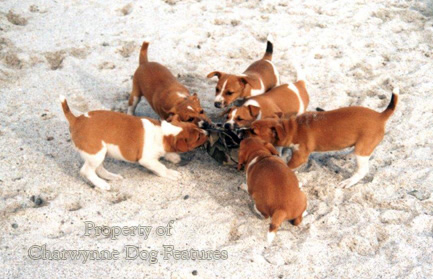
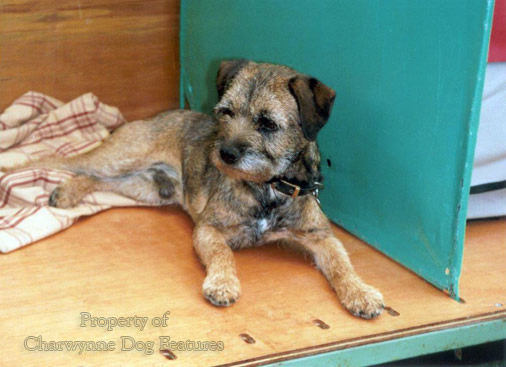 A great deal is said and written about the size, shape and background breeding of the working terrier but it’s rare to hear much talk about the mind of the dog. By that I mean a combination of attitude, eagerness to work, mental toughness, temperament and spirit. This, apart from length of coat and set of shoulders, is the most common difference between valued workers and show ring show-offs. There are of course show ring specimens that can carry out terrier work too and a feisty spirit is not unknown in exhibition animals. But what is the value of a handsome working dog of any breed or function if it has no desire or mental equipment for its designated task? The much respected Scottish Terrier breeder, WL McCandlish, wrote in his valuable book on that breed: ‘Brains are a most important, probably the most important, factor in a dog, but it shows a slovenly temperament and a cramped sense of enjoyment to acknowledge that the possession of only one factor in the making of a good dog satisfies the owner…the dog perfect in appearance may be an equally perfect fool.’
A great deal is said and written about the size, shape and background breeding of the working terrier but it’s rare to hear much talk about the mind of the dog. By that I mean a combination of attitude, eagerness to work, mental toughness, temperament and spirit. This, apart from length of coat and set of shoulders, is the most common difference between valued workers and show ring show-offs. There are of course show ring specimens that can carry out terrier work too and a feisty spirit is not unknown in exhibition animals. But what is the value of a handsome working dog of any breed or function if it has no desire or mental equipment for its designated task? The much respected Scottish Terrier breeder, WL McCandlish, wrote in his valuable book on that breed: ‘Brains are a most important, probably the most important, factor in a dog, but it shows a slovenly temperament and a cramped sense of enjoyment to acknowledge that the possession of only one factor in the making of a good dog satisfies the owner…the dog perfect in appearance may be an equally perfect fool.’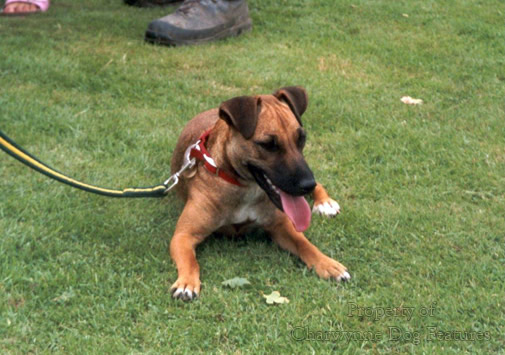

I see more gormless gundogs than I see brainless terriers, although soppy Airedales are always a disappointment. It is also eternally disappointing to see dog owners express their pleasure over the vacuous behaviour of their pet terrier on the superficial grounds that the dog is ‘cute’. Such dogs can be substitute children and not real dogs at all. Ignorance and urban living combine to relegate all too many dogs to the indoor cage, the utility room or the nearest sofa. Dogs, terriers especially, need stimulation and an outlet for their energy. We bred dogs for a purpose and selectively bred them to be highly proficient in their field. It is a form of indirect cruelty not to let a terrier live up to its name.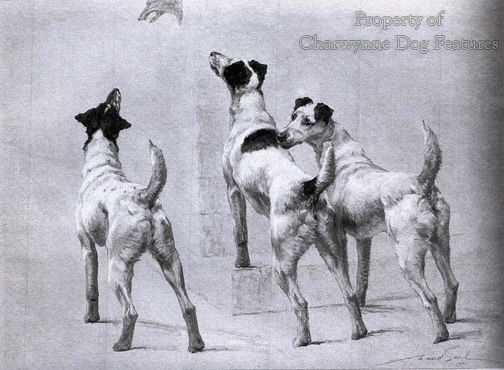
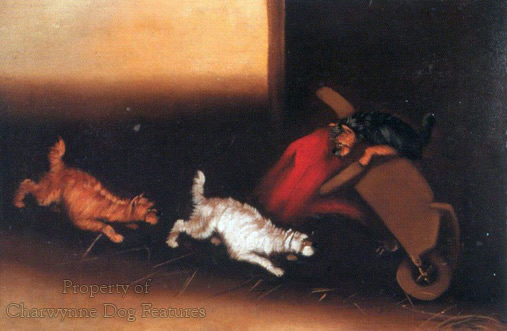
I have heard quite experienced terrier men express a preference for a certain coat colour, claiming that this brought a certain temperament with it. On this subject, the extremely knowledgeable sportsman and vet, RH Smythe wrote, in his excellent The Mind of the Dog, of 1958: ‘A Kerry Blue is usually vivacious and high spirited, sometimes truculent; a blue Bedlington is often sensible and gentle in disposition. A red Irish Terrier may exhibit the characteristics attributed to his countrymen, but a red Irish Setter may be mild and law-abiding. Any differences are obviously associated with the breed rather than with the colour of the coat.’ Despite that informed view, I hear Glen of Imaal fanciers rate their red-jacketed specimens as far more aggressive than the brindles or blues. I know of Lakeland owners who associate hardness with the grizzle coat. Black or near-black brindle Staffies were once favoured by those who fought their dogs, boasting of their increased ferocity. I once met a distinguished Cairn Terrier breeder who went for red wheaten dogs for stable temperaments and tractability. Colour preferences are not unusual but should never be linked too closely with mental attributes.
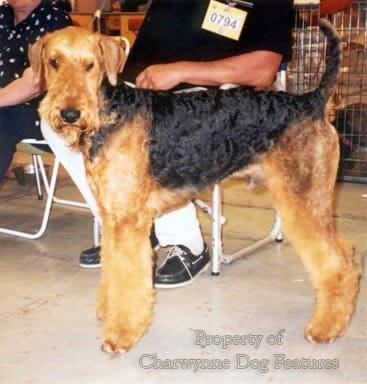
In his most informative book, Canine Behavior, published by Thomas, USA, of 1963, Michael Fox wrote: ‘The inheritance of behavior and temperament is complex, for the characteristics of a breed comprise a combination of several independently inherited traits which are modified by genetic factors. No trait is inherited as such; genetic factors are transmitted by inheritance, but the traits themselves are modified by interacting genetic and environmental factors. Training and early experience greatly influence these traits, and it is the selection of traits which facilitate easier training to perform particular tasks that differentiates one breed from another, and individuals within a breed.’ For terrier breeders it plainly pays to breed good worker to good worker but the timing and style of the first entering to quarry, allied to careful sympathetic training, is the crucially important. Impatient ignorant owners can so easily ruin a pup with immense innate talent.
The sportsmen who worked terriers either side of the Second World War probably had the best of their sport and their words, from decades of field work, is worth listening to. Geoffrey Sparrow, in his classic The Terrier’s Vocation, first published in 1949, writes: ‘I think it takes more patience and care to enter a Border Terrier than any other kind. He is usually of high courage, but naturally shy and nervous at the least noise, and thus he may be readily spoiled; and the same may be said of all terriers to a lesser degree.’ I am always suspicious of advertisements in the sporting press that offer for sale working terriers that are over a year old. Has their training been disastrous? Have they been ruined by thoughtless schooling? What is the state of mind of the terrier on offer?
From time to time, around the terrier rings at a country show, or more likely, in the bar, I hear the louder voices boasting of the hardness of their dogs. I then think back to Dan Russell’s advice, based on extensive experience, and written in his book Working Terriers of 1948: ‘How often one hears people say: “My dog’s a good ‘un, he is as hard as nails; he’ll go straight in and get hold.” My personal opinion is that such a dog is useless, and that it is a great pity that certain terrier breeders have made such a fetish of hardness…the hard dog is as big a nuisance as the coward. He spends half his working life in hospital.’ He goes on to criticise the occasional introduction of Bull Terrier blood into working strains, in the belief this produced what he called ‘mute brutes’. When I was a professional soldier, I soon learned to be wary of those wishing to appear ‘hard’; mental toughness is an admirable quality but is rooted in well-directed determination rather than a headstrong thirst for action. The old adage that starts ‘fools rush in…’ can be applied to terriers too!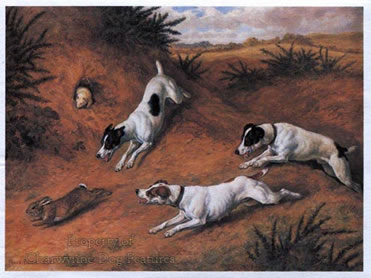
Experiments have been carried out that have implications for terrier-trainers. The scientists, in one test, put a mouse in a one-acre field and then let in a pack of Beagles. They found the mouse in less than a minute. It took a pack of Fox Terriers fifteen minutes to complete the same task. A group of Scottish Terriers actually failed to locate the mouse. It was believed that the terriers lacked the scenting skills of the Beagles but also lacked interest in the proceedings. But they found that the terriers were highly stimulated by sounds. They used their ears more than their noses.
To get the very best out of your terrier involves understanding what motivates him and how to channel this into your requirements from him. RH Smythe, in another of his books, The Private Life of the Dog: Does it Think? published in 1965, wrote: ‘Dogs and other animals, lower in the social scale than man, are rank materialists. They ignore detail or the line of a figure, but view the panorama stretching before them as a mosaic composed of massed units difficult to dissociate, the one from the entirety. Every now and then something in the panorama excites one of the senses; it may be a sound, or an odour, or an object which conveys an impression visually recognisable. The animal’s brain makes an effort to sort it out from the mosaic and associate it with some present need.’ Terriers may be ear- not nose-led hunters, they may associate the messages received from their ears with the next action they have been trained to perform. That is why their simple honest highly-focussed minds benefit from patient consistent training; their senses, then their actions need to be pointed in the right direction. Terriers have special needs; they were never sent away for training like gundogs or schooled to one specialised task like sheepdogs. They usually worked on their own, in the dark, against a wide variety of quarry, right across the globe. In a way, they are canine miners, spanning both underground and open-cast conditions. Instincts apart, I doubt if any other type of dog has their mindset.